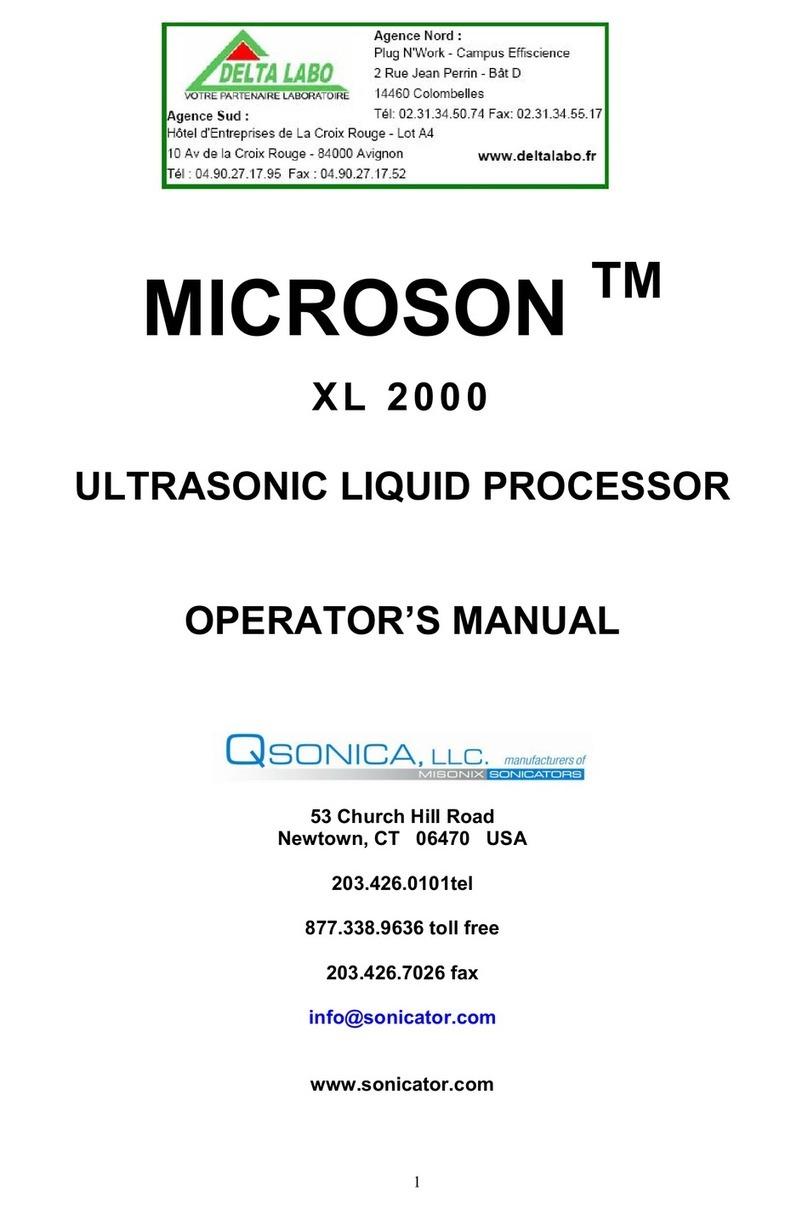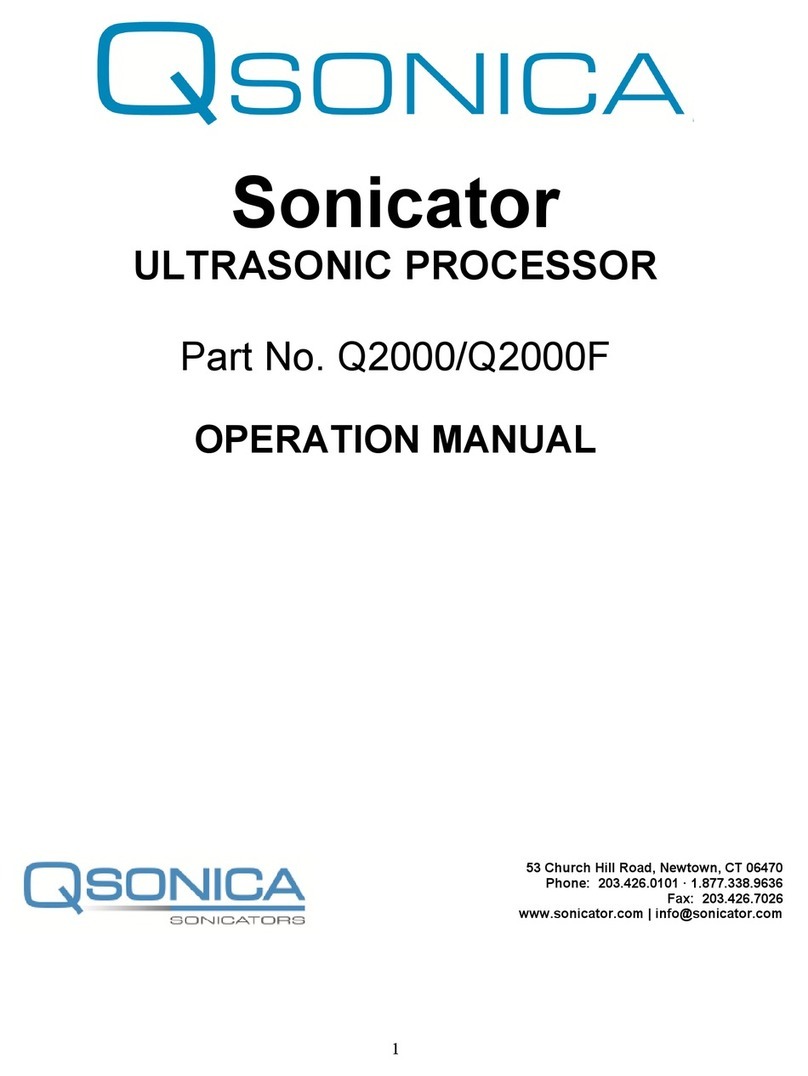
8
4. escription of Major Components
Generator
The Generator supplies a 20 KHz electrical signal to the converter. The S-4000’s advanced
digital signal processing tracks frequency changes in the Probe-Converter Assembly caused
by load and temperature changes, and maintains maximum electrical efficiency at all times.
The Generator also incorporates an enhanced digitally controlled automatic gain feature that
maintains the amplitude selected by the user. As the Probe is loaded, the S-4000 will
automatically supply greater power (wattage) to the Converter, thereby keeping the
amplitude constant. Amplitude, which is the distance the Probe’s tip moves out from rest and
back in each cycle, determines the level of sonication.
The S-4000 also contains a self test and diagnostic feature that acts as a signal analyzer in
determining the integrity of the system. The S-4000 is equipped with fault detection circuits
that protect the generator from overloads due to defective converter / probe assemblies. The
self test and diagnostic feature can be activated following an error condition to assist the user
in remedying the fault or from one of the menu screens.
Also employed in this design is a CD touchscreen user interface that contains easy to use
menus for the control and operation the system. The S-4000 can either be controlled
manually or automatically through user defined programs. Output amplitude can be set from
1% -100% giving a greater degree of resolution for setting the amplitude needed to
effectively process samples. Reference information such as converter power output, joules,
and process time is also displayed.
Incorporated into the S-4000 is a universal power supply that recognizes any AC mains
voltage throughout the world. The back panel of the S-4000 contains Mains power inlet and
fuse drawer, high voltage BNC connector for the converter cable, footswitch and K-type
temperature probe input connectors. In addition, a USB input connector is available for easy
field software upgrades.
Converter (also known as the Transducer)
The converter consists of a cylindrical unit (mounting area), and black colored front driver
(the first stage of acoustic amplification) with a threaded hole for horn attachment. The
generator supplies a 20 KHz electrical signal to the converter. The Converter changes the
signal to mechanical vibration.
Horn (also known as the Probe)
A horn is an approximately 5” long resonant body that steps down from 1.5” diameter to a
specific tip diameter. The horn serves as the second stage of acoustic amplification. The
horn may be solid or have a removable tip and is supplied with a threaded stud for
attachment to the converter and external threads around the body for attachment to other
accessories. Horns are available in three standard tip diameters of ½”, ¾” or 1" and come in
three different tip configurations. Tapped horns have a replaceable Flat Tip; Solid horns are
one solid piece and do not have a replaceable tip; and Sapphire tipped horns have a 1/16"
thick sapphire disk bonded to the tip of a solid horn.































